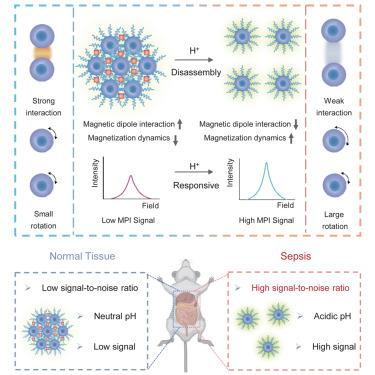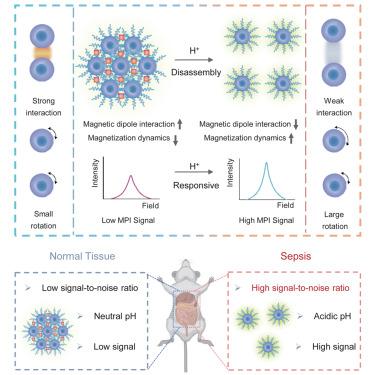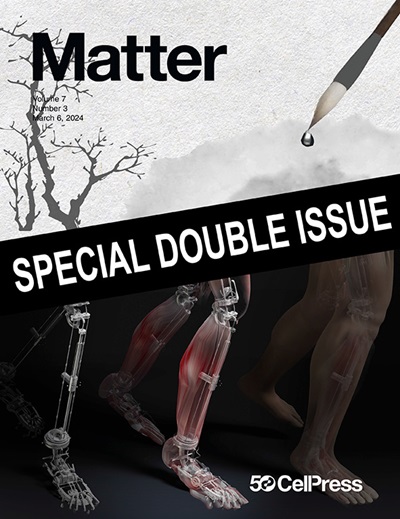配体介导的酸活化磁颗粒成像探针对败血症的高灵敏度诊断
IF 17.5
1区 材料科学
Q1 MATERIALS SCIENCE, MULTIDISCIPLINARY
引用次数: 0
摘要
磁颗粒成像(MPI)作为一种非侵入性生物医学成像方式具有巨大的前景,但由于缺乏可激活的生物标志物特异性成像探针,其发展受到阻碍。在这里,我们介绍了一种配体介导的酸活化MPI探针(LAMP),该探针由磁性纳米颗粒通过酸敏感亚胺键配体连接而成。LAMP在中性条件下稳定组装,在酸性微环境下快速拆卸。亚胺键交联促进了紧凑的结构,增强了磁偶极子相互作用,显著地淬灭了初始MPI信号。在暴露于酸性条件下,探针会分解,以高度可控的环境依赖方式恢复MPI信号。这种可切换的组件可以精确、实时地成像酸相关疾病,如败血症的进展。我们的研究结果表明,配体介导的磁偶极子相互作用调制为下一代MPI探针的设计提供了一个通用的平台,用于生物标志物特异性MPI成像。本文章由计算机程序翻译,如有差异,请以英文原文为准。


Ligand-mediated acid-activatable magnetic particle imaging probes for highly sensitive diagnosis of sepsis
Magnetic particle imaging (MPI) holds immense promise as a non-invasive biomedical imaging modality, but its advancement is hindered by the absence of activatable probes for biomarker-specific imaging. Here, we introduce a ligand-mediated acid-activatable MPI probe (LAMP) composed of magnetic nanoparticles linked via acid-sensitive imine bond-containing ligands. The LAMP exhibits stable assembly in neutral conditions and rapid disassembly in acidic microenvironments. The imine bond crosslinking promotes a compact structure that enhances magnetic dipole interactions, significantly quenching the initial MPI signal. Upon exposure to acidic conditions, the probe disassembles, restoring the MPI signal in a highly controlled, environment-dependent manner. This switchable assembly enables precise, real-time imaging of acidity-associated diseases such as sepsis progression. Our findings demonstrate that the ligand-mediated modulation of magnetic dipole interactions provides a versatile platform for the design of next-generation MPI probes for biomarker-specific MPI imaging.
求助全文
通过发布文献求助,成功后即可免费获取论文全文。
去求助
来源期刊

Matter
MATERIALS SCIENCE, MULTIDISCIPLINARY-
CiteScore
26.30
自引率
2.60%
发文量
367
期刊介绍:
Matter, a monthly journal affiliated with Cell, spans the broad field of materials science from nano to macro levels,covering fundamentals to applications. Embracing groundbreaking technologies,it includes full-length research articles,reviews, perspectives,previews, opinions, personnel stories, and general editorial content.
Matter aims to be the primary resource for researchers in academia and industry, inspiring the next generation of materials scientists.
 求助内容:
求助内容: 应助结果提醒方式:
应助结果提醒方式:


